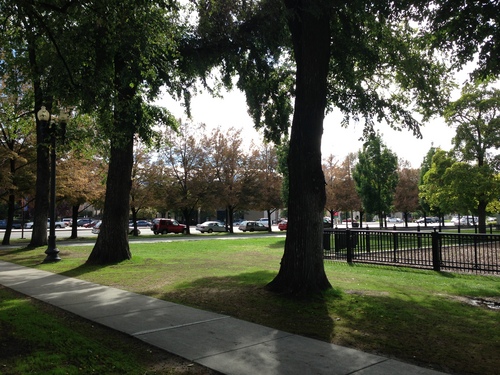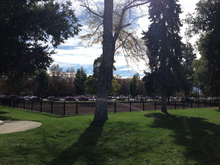This is an archived article that was published on sltrib.com in 2014, and information in the article may be outdated. It is provided only for personal research purposes and may not be reprinted.
Crime is down around Pioneer Park.
That's what the numbers show, anyway. But that's not how Mary Woodhead, a city planning commissioner, feels. For her, the downtown Salt Lake City neighborhood is "excruciatingly frightening." Along with the return of spring comes a return in public anxieties about the swelling homeless population in and around Pioneer Park.
As city planners and leaders continue to make decisions about how to respond to the crime in the area, it can be helpful to get a sense of what crime looks like in the neighborhood.

As the statistics provided by the police department show, the situation is improving. But the breakdown among the more serious crimes, in the photos section of this post, demonstrate that the situation is nuanced. While crimes like aggravated assault and robbery are up, vehicle theft and burglary are down. Larceny, which occurs at a rate that exceeded the chart's limitations, is also down.
It's worth noting that the statistics do not differentiate between crimes that involve transients and those that do not, and that they encompass the blocks from 100 South to 500 South and from 200 West to 600 West. Besides the park and the homeless services, there are parking garages, hotels, motels and all assortment of businesses in the area as well.
Within those parameters, it would appear that drugs and public intoxication — crimes that also contribute to the area's reputation problem — are down as well.

If you're wondering what kinds of drugs make up that line, it's predominantly cocaine. These statistics represent the number of possession cases in the neighborhood, and while people allegedly holding the stimulant has dropped significantly since 2012, it still reigns above the rest:

Heroin is quickly on the rise, though, which lines up with the reported uptick in alleged sales going on:

The people suspected of peddling the drugs are by and large not transients, though, according to the police. "The majority of those people coming down to purchase narcotics are not the homeless population. Those are citizens throughout the city, throughout the county who come down there," Burbank said.
As for sex crimes, those were on a slight uptick in 2013 as well — though prostitution, specifically, is hitting its lowest numbers in years.

But the numbers may not tell the full story. In a meeting last week, city planning commissioner Marie Taylor suggested that the decrease in crime could be due (at least in part) to people in the neighborhood have accepted the problem as the new paradigm and have stopped calling the police.
"So it has gotten worse, or is worse, but you're just not getting as many calls about it," Taylor told Police Chief Chris Burbank — who agreed "to a certain extent."
— Michael McFall
Twitter: @mikeypanda





